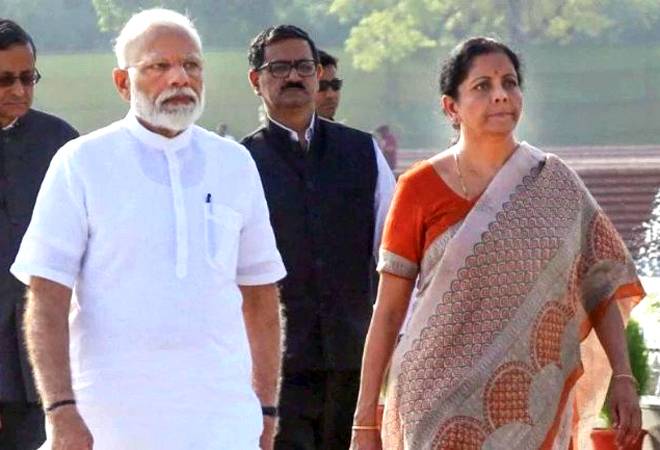

The Top 20 Economies in the World
Ranking the Richest Countries in the World
Countries by GDP
The different phases of economic cycles toss economies around the world. However, it’s interesting to see that these top economies don’t budge easily from the positions they hold. When compared to the top 20 economies of 1980, 17 are still present on the list, which means only three new entrants.
In addition to the key players remaining almost the same, this analysis reveals these economies are the engine of growth, commanding a majority of the global wealth. The nominal GDP of the top 10 economies adds up to about 66% of the world’s economy, while the top 20 economies contribute almost 79%.1 The remaining 173 countries together constitute less than one-fourth to the world’s economy.
This list is based on the IMF’s World Economic Outlook Database, October 2019.
Nominal GDP = Gross domestic product, current prices, U.S. dollars
GDP based on PPP = Gross domestic product, current prices, purchasing power parity, international dollars
Gross domestic product per capita, current prices, U.S. dollars
Gross domestic product based on purchasing-power-parity (PPP) share of world total, percent
1. United States
U.S. Nominal GDP: $21.44 trillionU.S. GDP (PPP): $21.44 trillion
The U.S. has retained its position of being the world’s largest economy since 1871. The size of the U.S. economy was at $20.58 trillion in 2018 in nominal terms and is expected to reach $22.32 trillion in 2020. The U.S. is often dubbed as an economic superpower and that’s because the economy constitutes almost a quarter of the global economy, backed by advanced infrastructure, technology, and an abundance of natural resources.
When the economies are assessed in terms of purchasing power parity, the U.S. loses its top spot to its close competitor China. In 2019, the U.S. economy, in terms of GDP (PPP), was at $21.44 trillion, while the Chinese economy was measured at $27.31 trillion. The gap between the size of the two economies in terms of nominal GDP is expected to lessen by 2023; the U.S. economy is projected to grow to $24.88 trillion by 2023, followed closely by China at $19.41 trillion.
2. China
China Nominal GDP: $14.14 trillionChina GDP (PPP): $27.31 trillion
China has experienced exponential growth over the past few decades, breaking the barriers of a centrally-planned closed economy to evolve into a manufacturing and exporting hub of the world. China is often referred to as the “world’s factory,” given its huge manufacturing and export base. However, over the years, the role of services has gradually increased and that of manufacturing as a contributor to GDP has declined relatively. Back in 1980, China was the seventh-largest economy, with a GDP of $305.35 billion, while the size of the U.S. then was $2.86 trillion. Since it initiated market reforms in 1978, the Asian giant has seen an economic growth averaging 10% annually. In recent years, the pace of growth has slowed, although it remains high in comparison to its peer nations.
The IMF projects a growth of 5.8% in 2020, which would sober down to around 5.6% by 2023. Over the years, the difference in the size of the Chinese and the U.S. economy has been shrinking rapidly. In 2018, the Chinese GDP in nominal terms stood at $13.37 trillion, lower than the U.S. by $7.21 trillion. In 2020, the gap is expected to reduce to $7.05 trillion, and by 2023, the difference would be $5.47 trillion. In terms of GDP in PPP, China is the largest economy, with a GDP (PPP) of $25.27 trillion. By 2023, China’s GDP (PPP) would be $36.99 trillion. China’s huge population brings down its GDP per capita to $10,100 (seventieth position).
3. Japan
Japan Nominal GDP: $5.15 trillionJapan GDP (PPP): $5.75 trillion
Japan is the third-largest economy in the world, with its GDP crossing the $5 trillion mark in 2019. The financial crisis of 2008 rocked the Japanese economy and it’s been a challenging time for its economy since then. The global crisis triggered a recession, followed by weak domestic demand and huge public debt. When the economy was beginning to recover, it suffered a massive earthquake that hit the country socially and economically. While the economy has broken the deflationary spiral, economic growth remains muted.
Its economy will get some stimulus with the 2020 Olympics keeping the investment flow strong, which is backed by a lax monetary policy by the Bank of Japan. Japan slips to the fourth spot when GDP is measured in terms of PPP; GDP (PPP) is $5.75 trillion in 2019, while its GDP per capita is $40,850 (24th spot).
4. Germany
Germany Nominal GDP: $3.86 trillionGermany GDP (PPP): $4.44 trillion
Germany is not just Europe’s largest economy but also the strongest. On the global scale, it is the fourth-largest economy in terms of nominal GDP, with a $4 trillion GDP. The size of its GDP in terms of purchasing power parity is $4.44 trillion, while its GDP per capita is $46,560 (18th place). Germany was the third-largest economy in nominal terms in 1980, with a GDP of $850.47 billion.
The nation has been dependent upon capital good exports, which suffered a setback post-2008 financial crisis. The economy grew by 2.2% and 2.5% in 2016 and 2017, respectively. However, the IMF says this slipped to 1.5% and 0.5% in 2018 and 2019, respectively. To bolster its manufacturing strength in the current global scenario, Germany has launched Industrie 4.0—its strategic initiative to establish the country as a lead market and provider of advanced manufacturing solutions.
5. India
India Nominal GDP: $2.94 trillionIndia GDP (PPP): $10.51 trillion
India is the fastest-growing trillion-dollar economy in the world and the fifth-largest overall, with a nominal GDP of $2.94 trillion. India has become the fifth-largest economy in 2019, overtaking the United Kingdom and France. The country ranks third when GDP is compared in terms of purchasing power parity at $11.33 trillion. When it comes to calculating GDP per capita, India’s high population drags its nominal GDP per capita down to $2,170. The Indian economy was just $189.438 billion in 1980, ranking 13th on the list globally. India’s growth rate is expected to rise from 7.3% in 2018 to 7.5% in 2019 as drags from the currency exchange initiative and the introduction of the goods and services tax fade, according to the IMF.
India’s post-independence journey began as an agrarian nation; however, over the years the manufacturing and services sector has emerged strongly. Today, its service sector is the fastest-growing sector in the world, contributing to more than 60% to its economy and accounting for 28% of employment. Manufacturing remains as one of its crucial sectors and is being given due push via the governments’ initiatives, such as “Make in India.” Although the contribution of its agricultural sector has declined to around 17%, it still is way higher in comparison to the western nations. The economy’s strength lies in a limited dependence on exports, high saving rates, favorable demographics, and a rising middle class.
6. United Kingdom
U.K. Nominal GDP: $2.74 trillionU.K. GDP (PPP): $3.04 trillion
The United Kingdom, with a $2.83 trillion GDP is the fifth-largest economy in the world. When compared in terms of GDP purchasing-power-parity, U.K. slips to the ninth spot with a GDP-PPP of $3.04 trillion. It ranks 23rd in terms of GDP per capita, which is $42,558. Its nominal GDP is estimated to remain at $2.83 trillion during 2019, but its ranking is expected to slide to the seventh spot by 2023 with its GDP of $3.27 trillion.
Starting from 1992 until 2008, the economy of the U.K. witnessed an uptrend in each quarter. However, it witnessed a decline in its output for five consecutive quarters starting April 2008. The economy shrunk by 6% during this time (between the first quarter of 2008 and the second quarter of 2009) and eventually took five years to grow back to the pre-recession levels, according to data from the Office of National Statistics.
The economy of the U.K. is primarily driven by the services sector, which contributes more than 75% of its GDP, with manufacturing the second prominent segment, followed by agriculture. Although agriculture is not a major contributor to its GDP, 60% of the U.K.’s food needs are produced domestically, even though less than 2% of its labor force is employed in the sector.
7. France
France Nominal GDP: $2.71 trillionFrance GDP (PPP): $2.96 trillion
France, the most-visited country in the world, is the third-largest economy of Europe and the sixth-largest in the world, with a nominal GDP of $2.78 trillion. Its GDP in terms of purchasing power parity is around $2.96 trillion. The country offers a high standard of living to its people as reflected in its GDP per capita of $42,877.56. In recent years, the economic growth has slowed, resulting in unemployment that has placed immense pressure on the government to reboot the economy. The World Bank has recorded unemployment rates at 10% during 2014, 2015, and 2016. During 2017, it declined to 9.681%.
In addition to tourism, which remains very important for its economy, France is a leading agricultural producer, accounting for about one-third of all agricultural land within the European Union. France is the world’s sixth-largest agricultural producer and the second-largest agricultural exporter, after the United States. The manufacturing sector is primarily dominated by the chemical industry, automotive, and armament industries. The economy has grown by 2.3% during 2017 and is expected to grow 1.8% and 1.7% during 2018 and 2019 as per the IMF.
8. Italy
Italy Nominal GDP: $1.99 trillionItaly GDP (PPP): $2.40 trillion
With a nominal GDP of $2.07 trillion, Italy is the world’s eighth-largest economy. Its economy is expected to expand to $2.26 trillion by 2023. In terms of GDP (PPP), its economy is worth $2.40 trillion and it has a per capita GDP of $34,260.34. Italy—a prominent member of the eurozone—has been facing deep political and economic chaos. Its unemployment rate continues to be in double-digits, while its public debt remains sticky at around 132% of GDP.
On the positive side, exports and business investment are driving economic recovery. The economy clocked 0.9% and 1.5% in 2016 and 2017, respectively. It is projected to edge down to 1.2% in 2018 and 1.0% in 2019.
9. Brazil
Brazil Nominal GDP: $1.85 trillionBrazil GDP (PPP): $3.37 trillion
Brazil is the largest and most populous nation in Latin America. With a nominal GDP of $1.87 trillion, Brazil is the ninth-largest economy in the world. The nation that had been riding on the commodity wave suffered multiple setbacks with the end of the commodity supercycle, in addition to internal problems of corruption and political uncertainty, which dampened the investment and business environment.
During 2006–2010, the nation grew at an average 4.5%, moderating to around 2.8% in 2011–2013. By 2014, it was barely growing at 0.1%. In 2016, Brazil contracted by 3.5% before rebounding by 1% in 2017. IMF projects the economic growth to revive to 2.5% by 2019. Brazil is part of the BRICS, along with Russia, India, China, and South Africa. The country has a GDP (PPP) of $3.37 trillion and a GDP per capita of $8,967.66.
10. Canada
Canada Nominal GDP: $1.73 trillionCanada GDP (PPP): $1.84 trillion
Canada displaced Russia to take the 10th spot in 2015 and has retained its position since then. Canada’s nominal GDP is currently at $1.71 trillion and is expected to touch $1.74 trillion in 2019 and $2.13 trillion by 2023. Its per capita GDP of $46,260.71 is ranked 20th globally, while its GDP of $1.84 trillion in terms of PPP pulls it down to the 17th spot.
The country has contained its level of unemployment and it’s likely to further shrink. While services are the major sector, manufacturing is the cornerstone of the economy, with 68% of its exports constituting of merchandise exports. Canada is laying a lot of emphasis on manufacturing, which is crucial to its future economic growth. Canada registered a growth of 3% in 2017 vis-à-vis 1.4% in 2016 and is expected to grow 2% during 2018 and 2019.
11. Russia
Russia Nominal GDP: $1.64 trillionRussia GDP (PPP): $4.21 trillion
Russia, the largest country on Earth in terms of landmass, is the 11th-largest economy in the world, with a nominal GDP of $1.63 trillion. Russia moves up the ladder to the sixth spot for rankings, with a $4.21 trillion GDP based on PPP.
The 1990s were a rough period for its economy, since it inherited a devastated industrial and agricultural sector along with the fundamentals of a centrally planned economy. During the next decade, Russia witnessed growth at a healthy pace of 7%. However, this growth was led by the commodity boom.
The dependence of the Russian economy on oil was exposed during the 2008–2009 global financial crisis and eventually again in 2014. The situation worsened with the imposition of sanctions by the West. The economy contracted by 0.2% in 2016, however, it rebounded with a 1.5% growth in 2017. IMF projects a growth of 1.7% and 1.5% during 2018 and 2019, respectively.
12. South Korea
South Korea Nominal GDP: $1.63 trillionSouth Korea GDP (PPP): $2.14 trillion
The South Korean economy, known for conglomerates like Samsung and Hyundai, is the 12th largest economy in the world, with a nominal GDP of $1.62 trillion. The country has made incredible progress in the past couple of decades to establish itself as a hi-tech, industrialized nation.
Over the past four decades, South Korea has demonstrated incredible economic growth and global integration to become an industrialized economy. During the 1960s, its GDP per capita was among the poorer countries in the world, which is now at the 29th spot with $31,345.62. Its GDP (PPP) is at $2.14 trillion. South Korea entered the trillion-dollar club in 2004, propelled by international trade and industrialization. It is among the top exporters in the world and presents great investment opportunities, reflected in its ease of doing business ranking.
13. Spain
Spain Nominal GDP: $1.4 trillionSpain GDP (PPP): $1.86 trillion
The $1.4 trillion Spanish economy is the 13th-largest in the world. Post-Brexit, Spain is the fourth-largest economy in the eurozone. The country, with a population of 46.6 million, has witnessed a long recessionary period (second quarter of 2008 until the third quarter of 2013) and is slowing returning to health on the back of record tourism and exports, along with a revival in domestic consumption.
Spain replaced the United Kingdom to become the second most-visited country in the world, with a huge influx of inbound tourists. In terms of sectors, agriculture has traditionally played a crucial role, however, with time the contribution of this sector has fallen to about 3%. The country remains a major exporter of olive oil, pork, and wine. Some of the prominent industrial sectors are automobiles, chemicals, pharmaceuticals, and industrial machinery. The economy grew 3.1% in 2017 and is expected to edge down to 2.8% and 2.2% in 2018 and 2019, respectively.
14. Australia
Australia Nominal GDP: $1.38 trillionAustralia GDP (PPP): $1.32 trillion
Australia is the 14th-largest economy, with a nominal GDP of $1.42 trillion. The economy has grown at a healthy pace for the past two decades on the back of low unemployment, low public debt and inflation, robust exports, a strong service sector, and a stable financial system. Australia is also a land rich in natural resources, as well as a major exporter of energy and food.
In terms of different sectors of its economy, agriculture and industry contribute about 4% and 26%, respectively, while its service sector, which engages 75% of its employed population, contributes 70% to its GDP. It is estimated that the economy of Australia will be close to the $1.7 trillion mark by 2023 and its GDP based on PPP, which is currently at $1.32 trillion, will be nearing $1.65 trillion during the same time period. Australia ranks 11th on the measure in terms of GDP per capita, with $56,351.58 in 2018.
15. Mexico
Mexico Nominal GDP: $1.27 trillionMexico GDP (PPP): $2.57 trillion
Mexico, the second-largest economy in Latin America, is the 15th-largest economy in the world, with a nominal GDP of $1.22 trillion, while its GDP in terms of PPP is $2.57 trillion. The same are expected to touch $1.50 trillion and $3.18 trillion, respectively, by 2023. Back in 1980, Mexico was the 10th-largest economy, with a nominal GDP of $228.6 billion.
The economy expanded by 2.9% and 2% during 2016 and 2017. Over the next two years, the IMF projects a growth of 2.3% and 2.7%, respectively. The share of agriculture in the Mexican economy has remained under 4% over the last two decades, while its industry and services contribute around 33% and 63% to its output. Automotive, oil, and electronics are among the developed industries, while financial services and tourism are prominent contributors within services.
16. Indonesia
Indonesia Nominal GDP: $1.11 trillionIndonesia GDP (PPP): $3.50 trillion
Indonesia is the largest economy in Southeast Asia and the 16th-largest on the global map. The Indonesian economy has shown tremendous progress over the last two decades. It was a victim of the Asian financial crisis in 1997. However, it has charted impressive growth ever since.
The economy is now a part of the trillion-dollar club, with a nominal GDP of $1.02 trillion. The World Bank cites its enormous progress on poverty reduction—”cutting the poverty rate to more than half since 1999, to 10.9% in 2016.” Its GDP per capita at $3,871 is way higher than it was in 2000 at $857. Indonesia, the fourth most populous nation, is the seventh-largest economy, with a $3.50 trillion GDP in terms of purchasing power parity. Among sectors, agriculture contributes about 14% to its GDP, while industry and services add approximately 43% each to its output.
17. Netherlands
Netherlands Nominal GDP: $902.36 billionNetherlands GDP (PPP): $969.23 billion
The Netherlands, the sixth largest economy in the European Union, is the 17th-largest economy in the world. Back in 1980, the Netherlands was the 12th-largest economy globally, with a GDP of $189.49 billion. Today, the country has a nominal GDP of $912.90 billion and a GDP-PPP of $969.23 billion. It ranks 13th on the basis of per capita income, with a GDP per capita of $53,106.38.
The economy is backed by abundant natural resources, booming tourism, and sound industries like food processing, chemicals, electrical machinery, and petroleum refining. The Netherlands can boast of its highly mechanized, highly productive agricultural sector, which makes it among the top agricultural exporters globally. Despite its small landmass, the Netherlands is a major player in the world’s trade.
18. Saudi Arabia
Saudi Arabia Nominal GDP: $779.29 billionSaudi Arabia GDP (PPP): $1.86 trillion
Saudi Arabia is predominantly an oil-based economy. The country possesses around 18% of the world’s proven petroleum reserves. It ranks as the largest exporter of petroleum, with the oil and gas sectors accounting for about 50% of its GDP and 70% of its export earnings. Saudi Arabia is rich in other natural resources like natural gas, iron ore, gold, and copper.
The economy showed recovery from the oil shock in 2016 with a 1.7% growth. In 2017, it incurred a huge budget deficit, financed by foreign reserves and bond sales. The country is looking to bolster its non-oil economy in order to diversify its economy and tackle the problem of unemployment. In 2018, its nominal GDP was $782.48 billion, while its GDP based on PPP was $1.86 trillion. The economy, which slumped by 0.9% in 2017, is expected to grow by 1.9% in 2018 and 2019.
19. Turkey
Turkey Nominal GDP: $743.71 billionTurkey GDP (PPP): $2.29 trillion
Turkey, with its $766.43 billion economy, is the 19th-largest economy in the world. The share of Turkey’s middle-class increased from 18% to 41% of the population between 1993 and 2010, according to the World Bank, and the country joined the upper-middle income group in the late 2000s.
The economy is projected to join the trillion-dollar club by 2023, while its GDP-PPP will reach $2.78 trillion that same year. Between 1960 and 2012, Turkey’s average annual GDP growth was 4.5%.
The economy has been growing at an impressive pace since the 2000s, driven by both industry and services. Its economy witnessed macroeconomic and fiscal stability, while its employment and income levels witnessed an increase. The economy registered a 7.4% growth in 2017. However, it is projected to soften to 4.2% in 2018 amid rising external debt, depreciating currency, rising inflation, and unemployment.
20. Switzerland
Switzerland Nominal GDP: $715.36 billionSwitzerland GDP (PPP): $548.48 billion
Switzerland is one of the most stable market economies in the world. It is the 20th-largest economy in the world, with a nominal GDP of $703.75 billion. The country offers a very high standard of living for its people, represented by the GDP per capita of $82,950.28, which is only behind Luxembourg.
Switzerland has a booming tourism industry and a strong financial sector. Switzerland also has a long tradition of industry, especially the clock and watches industry and pharmaceuticals. Agriculture only contributes about 1% to its GDP. The country has a highly skilled workforce and low unemployment (3%). The country’s economy benefits from its stable political system, sound infrastructure, and favorable tax rates. In recent years, its growth rate has hovered between 1–1.5%.



















